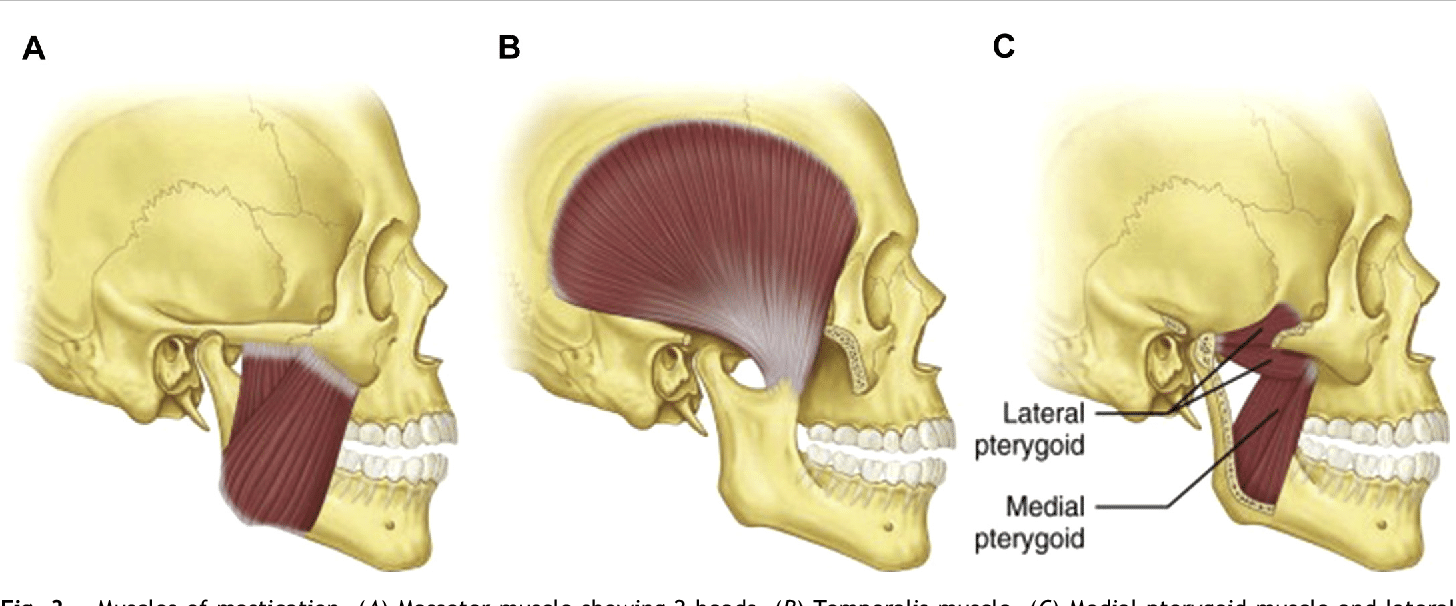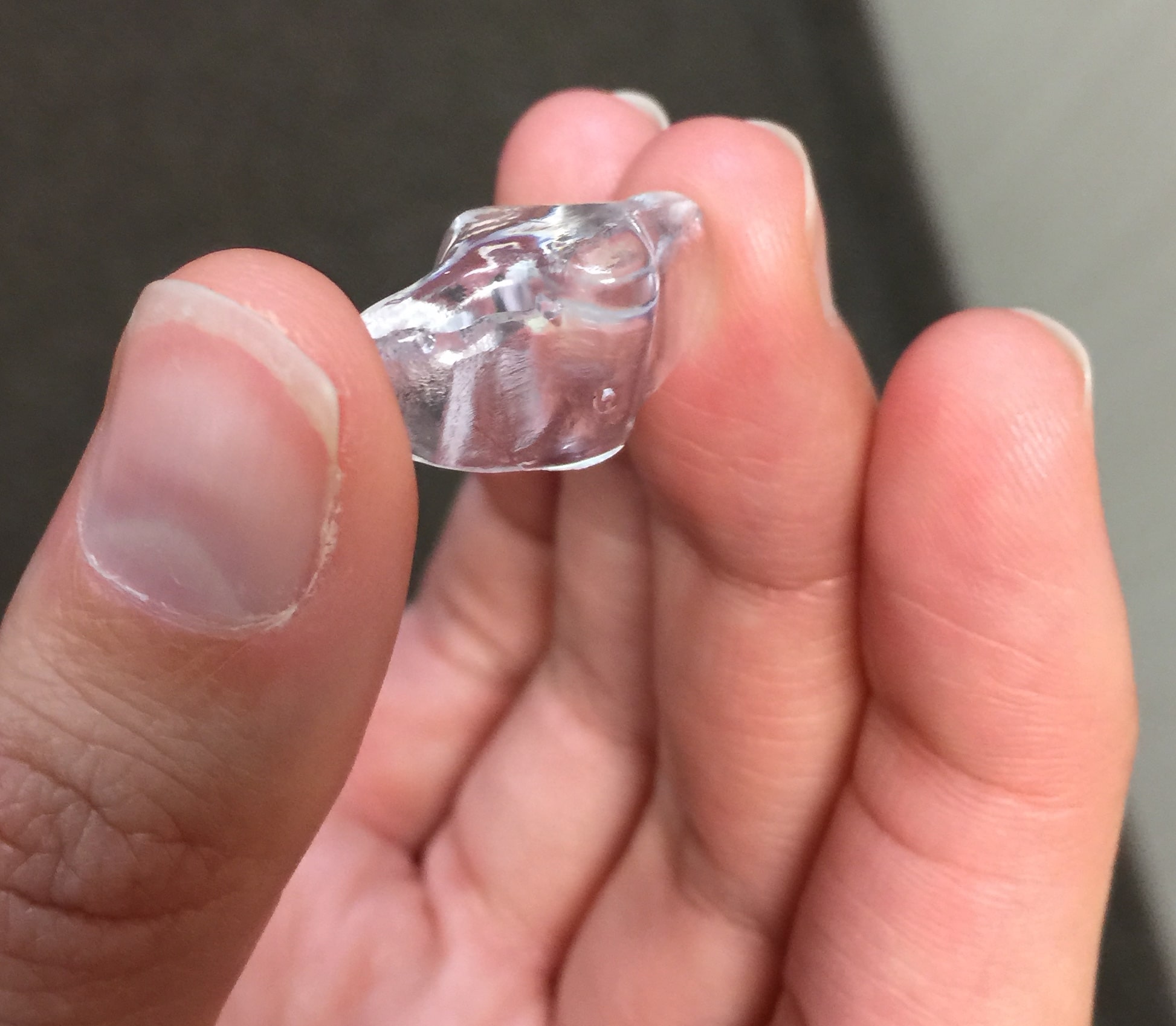NTI Appliance? What on earth is that and why would anyone brand a product with that name? Well, I must tell you, it’s obvious the dental industry loves three-letter anonyms. The NTI device is a mouth guard for TMJ that is cleared by the FDA. If that acronym rhetoric doesn’t get you excited, there’s not much else in dentistry. But I digress. Here’s why it all matters, the NTI night guard is the only single-piece mouth guard cleared to treat bruxism, headaches, and symptoms of temporomandibular joint disorder. It is available by prescription only at your dentist.
In this article, we’ll discuss the NTI-TSS appliance, how it works, and why the NTI night guard for TMJ is different than what you might buy over the counter.
How the Bite Creates Muscle Tension and Headaches
The jaw opens and closes, seems normal right? Well it is, until things go wrong.
And that’s what happens for a large share of the population.
Studies estimate that 5% to 12% of the population have symptoms of TMJ disorder that are classified as severe, and as many as 70% of the population has at least one mild symptom. I don’t know about you, but considering there’s about 8 billion people on the planet, that seems like a problem we should be thinking about more.
What’s happening to cause these problems is that the jaw doesn’t just open and close. Nope. It’s more complicated than that, but luckily, I’ll simplify.
The jaw opens and closes because of muscles and nerves that work to power it. Each of these muscles and nerves connects not only to the jaw, but also to numerous other parts of the head.
Therefore, if the jaw is opening and closing under tension, it creates symptoms that can be more extensive than just the jaw. It affects the muscles which lay on the sides of the head, the muscles of the face, it can create headaches, and it can impact overall quality of life.
How the Muscles Create Symptoms of TMJ Disorder
I’ve been a TMJ specialist for a long time. Do you want to know a secret? It always stumped me how to answer one question a patient asked me. They would say…
But my teeth had Braces and they look perfect, how could they cause TMJ symptoms like headaches?
The reality is that the teeth can look perfect and still cause symptoms of TMJ. It has nothing to do with how the teeth look. It has everything to do with how they function within the overall system.
I had trouble with making the answer to that question make sense for a long time. How could perfect teeth still be painful? And then I started using the analogy.
Have you ever put two lego pieces together? They snap together like a perfect fit right? That’s what happens with perfectly aligned teeth. The top and bottom teeth fit together and everything looks wonderful.
But what if your hands were tired apart so that they could barely reach each other? You could probably still snap the lego pieces together perfectly, but doing so is under tension. It creates strain as you try to align your hands together to fit the pieces.
That’s what happens sometimes with the teeth. It’s just not as obvious because it happens on a much smaller scale.
In the mouth, even a fracture of a millimeter can cause a problem.
We need to remember that teeth aren’t like single puzzle pieces. They are “tied down” in the top and bottom jaw so they have to work within that frame, first and foremost. There are limits to the amount the jaw, the muscles, and the ligaments can stretch to put the teeth together. Even if everything looks beautiful on the outside.
Sometimes even a small degree of variation between how the teeth fit and how the jaw wants to fit… can cause problems.
So here’s the bottom line. It’s all about function first.
I want you to understand that there’s nothing wrong with beautifully aligned teeth. In most cases, they function well, but not always. Sometimes adjustments need to be made to allow the teeth to look and also function properly.
What is the NTI Appliance

For many decades it was known that wearing a night guard or an appliance that covers the teeth reduced symptoms of TMJ disorder—to some degree. Emphasis on “some” degree.
Early studies showed that migraine sufferers who wore mouth guards had a decrease in their migraine attacks by 40% the number they usually would have.
Then in 1999, the NTI appliance came along. It was developed by James P Boyd who was able to take the concept one step further.
The NTI appliance essentially was a variation of the traditional full coverage TMJ mouth guard, but with one different feature. It eliminated the ability to clench the back teeth and also prevented the patient from grinding the canines side to side.
Altering the traditional mouth guards for TMJ as proposed by the NTI was a breakthrough for migraine treatment, as it was the first device supported by studies to reduce the number of migraine attacks by more than 50% which was the benchmark for other migraine medications. In 2001, the NTI-tss device became the first mouthguard for TMJ cleared by the FDA for the treatment of migraines and muscular pain.
What does NTI Dental Appliance Stand For?
Nociceptive trigeminal inhibition tension suppression system (abbreviated to NTI-TSS, or NTI-tension suppression system). The NTI appliance is a form of occlusal splint therapy that is claims to prevent headache and migraine by reducing clenching and grinding.
How the NTI Appliance Works as a Night Guard for TMJ
The NTI appliance is a small mouth guard that is custom fitted by a dentist. It is designed to fit only over a small portion of the front teeth. Although there are now other variation available, the most common NTI device is designed to fit only over the front six teeth.
Okay, so the NTI appliance is a mouth guard for TMJ that fits only over the front teeth. And you’re telling me that’s the magic for treating TMJ disorder and reducing migraines?
Well not exactly.
The way the NTI appliance works is by reducing the opportunity for the back teeth to clench and it reduces the ability of the canine teeth to grind side to side. But what matters is that when those teeth are out of contact, it significantly prevents the muscles of the head and jaw from contracting.

When you look at the muscles of the jaw, you’ll notice there are four major muscles. The temporalis, the masseter, the medial pterygoid, and the lateral pterygoid.
I want you to pay particular attention to the temporalis for a moment. When you look at the muscle, you’ll notice it’s a large diffuse fan shape muscle that lays on the sides of the head.
It’s located in the head, but the majority of its function is related to the movement of the jaw. Seems strange, but it does make sense.
The jaw uses the sides of the head for leverage when opening and closing the jaw. So if theres strain on the jaw, there’s strain on the sides of the head.
The NTI appliance has been shown by studies to break that tension that harbors in the temporalis and other jaw muscles.
If you’re having headaches on the sides of the head, muscle pain around the face, and other symptoms of TMJ disorder the NTI appliance is an option to test how your jaw may be contributing to those symptoms.
Why the NTI Appliance is Not the Permanent Solution
The NTI appliance is a good option for therapy for the patient that has symptoms of TMJ disorder and headaches. But it is not a stand alone solution, and its not even a permanent solution.
Here’s why.
I want you to think of the NTI appliance like an experiment. Night guards for TMJ should always begin as an experiment. It’s a reversible, removable method. Thats how you test how various symptoms respond to altering the jaw position. If your symptoms improve, its an indication that they are related to your jaw position.
And if they do not improve?
It’s an opportunity to ask more questions about what might else be causing these issues.
In my practice, I advocate testing everything before we do any permanent treatment for TMJ disorder. The NTI device and night guards for TMJ in general, are a great way to test how the symptoms respond before doing any permanent, non-reversible treatment.
But in that same vein, I also want you to understand that an NTI night guard is not something that you should be wearing for your entire life—for two reasons.
The first is that if you’re getting good results with the NTI appliance its an indication you need to change something. Maybe its orthodontics, maybe its botox of the muscles, or maybe its something else like equilibrating the bite.
The point is the mouth guards for TMJ like the NTI appliance should be used to convert the patient to a more permanent solution.
The second reason I recommend the NTI appliance as a temporary solution and not necessarily a permanent solution is that the NTI appliance has an inherent flaw. Because the NTI appliance only covers the front teeth, over time it may create issues with the back teeth. Because the NTI appliance props the back teeth open, the back teeth can erupt more and create an unintended open bite in which the front teeth no longer touch.
NTI Night Guard: Wrapping up
If you’re looking for a night guard for TMJ or for migraines, you’re on the right track. The jaw, in all its glory, does cause a surprising amount of issues in the head and neck. And what’s worse is… many people are not aware that it’s even a potential cause.
By understanding your symptoms and testing them by wearing a prescription mouth guard for TMJ like the NTI night guard, it helps to rule out how much or how little your jaw function is involved…..and it ultimately positions you to find the solution to a better quality of life.


